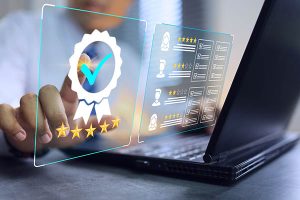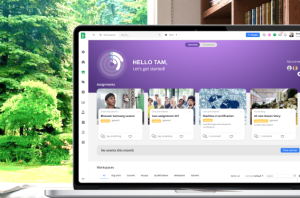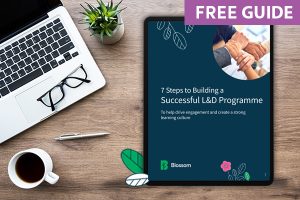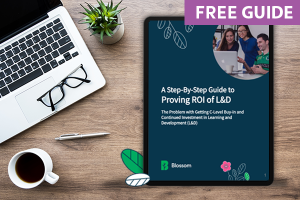While these terms may appear the same, they carry nuanced implications that can significantly impact the success of your organization’s learning initiatives.
Deciding which method of learning is best for your organization can pose real challenges. Finding the right balance between face-to-face interactions and digital convenience can help you achieve your organization’s learning goals and engage employees.
Considering 71% of employees worldwide contemplated a substantial career change in 2022, and 93% of organizations are concerned about employee retention, finding the right learning and development (L&D) model that a) allows people to reach their full potential and b) retains their highest-performing employees is a strategic decision many businesses continue to struggle with.
Two learning approaches to consider are blended learning and hybrid learning. While these terms may appear the same, they carry nuanced implications that can significantly impact the success of your organization’s learning initiatives.
This article will help you understand the similarities and differences between the two models. Identify which learning approach suits your business best–unlocking your workforce’s full potential.
What is blended learning?
A blended learning model allows learners to engage in a mix of traditional learning and online components, such as face-to-face sessions, e-learning modules, and virtual discussions.
Whereas traditional classroom-based learning occurs in a physical classroom setting with an instructor delivering content to a group of learners, with blended learning, employees can alternate between in-person and online sessions.
Because blended learning provides personalized and adaptive learning, it gives employees a customized learning experience. This flexibility offers more personalized learning paths by catering to the diverse learning styles of your workforce.
Blended learning has gained traction in education and corporate training due to its ability to adapt to evolving learning preferences, promote engagement, and provide a balanced and effective approach to skill and knowledge development.
While digital learning methods are on the rise, as indicated by 48% of learning practitioners reporting increased usage, traditional in-person education is declining.

Blossom allows you to blend learning programs–from one centralized platform. A unified platform enables managers to strategically plan the development of their teams and employees. By identifying skill gaps and tailoring training programs to meet the organization’s goals, productivity and performance increase.
What is hybrid learning?
Although interchangeable with blended learning, hybrid learning has subtle differences. It still combines traditional in-person classroom instruction with online learning activities; however, with hybrid learning, a greater equal distribution of in-person and online activities offers a more balanced model.
Although the term can be interpreted differently depending on the organization and context, hybrid learning provides an effective approach to employee skill and knowledge development.
Blended learning vs. hybrid learning: Which is best for your organization?
Remote work and global connectivity are the norm for many businesses. In fact, by 2025, 36.2 million people in the US alone will be remote–an increase of 16.8 million people from pre-pandemic rates.
This means finding a suitable learning method to meet a diverse and complex workforce is more complicated than organizing one or two training courses for employees in one location.
Thankfully, 83% of organizations want to build a more people-centric culture. As companies look for effective ways to reskill or upskill their workforce, blended and hybrid learning have become efficient solutions.
But which learning model is better suited for your organizational needs?
Choosing the right learning approach can make or break the success of your L&D initiatives.
Both blending and hybrid learning models offer some degree of customization and flexibility. With blended learning, businesses can tailor the mix of in-person and online components to suit their specific learning objectives, audience preferences, and organizational culture. This flexibility allows for a more targeted and adaptable learning experience.
By contrast, hybrid learning has some limitations to consider. Since this model has a greater balance between ILT and online learning, offering training to employees across different locations can be problematic for remote workers or individuals not located near a training venue.
Let’s take a look at a real-life example.
Rambam Medical Centre is based in Israel. With a global workforce of 6000, employees could only access training from a fixed computer within their onsite department. Employee training was inflexible due to their complex hierarchical structure and varying shift patterns.
A blended learning model helped Rambam Medical Centre deliver personalized training and development events around their staff’s busy schedules and 24/7 shift patterns. Furthermore, training is tailored to their complex hierarchy, with different job titles requiring different levels of medical certification.
- “Blossom LMS really helped us meet the training needs of our team. Its sophisticated functions really help us meet our training needs, even with our team’s different training needs and complex shift patterns.” –Shai Ashkenazi, Head of Training & Development at Rambam Healthcare
Secondly, some employees might need opportunities to practice those skills in the workplace to apply theoretical knowledge from classroom sessions to real-world situations.
With blended learning, businesses can maximize the value of face-to-face interactions. In-person sessions can be reserved for hands-on activities, group discussions, case studies, and real-time problem-solving. This ensures valuable in-person time is dedicated to activities that benefit from physical presence.
Next, blended learning can often be more cost-effective than hybrid learning. By strategically incorporating online modules, businesses can reduce expenses associated with travel, venue rentals, and course materials–while maintaining the benefits of face-to-face interactions.
As blended learning can offer a greater return on investment (ROI), you can roll out training at scale and pace.
Both options accommodate individual learning styles. Some employees may thrive in in-person discussions, while others prefer self-paced online learning. Since hybrid learning offers a more equal mix of delivery methods, ILT sessions can support some learner preferences.
Let’s put that in practice and say an employee has a preferred visual learning style. Blended learning is particularly beneficial for visual learners because it caters to their preferred learning style. Visual learners can better understand and retain information more effectively when presented with visual aids and imagery.
On the other hand, meeting the preferred learning style for visual learners during ILT can be more complex. In a traditional classroom, information delivery can be fast-paced, making it challenging for visual learners to process and understand difficult concepts without visible support. Employees might need more time to visualize the material mentally, so they may need help to keep up with learning content.
Also, with hybrid learning, visual learners might sometimes feel overwhelmed by the fast pace of classroom-based sessions. Blended learning allows employees to process visual content at their own pace–reducing information overload.
A hybrid learning model might not always ensure employees sustain their learning over time. And without the reinforcement and ongoing practice that online learning offers, knowledge, and skills can dwindle.
With Blossom, you can track learner progress, identify challenges, and optimize your L&D efforts for both approaches. A centralized employee performance dashboard and evaluation forms monitor learners’ progress–allowing you to put additional support in place earlier.
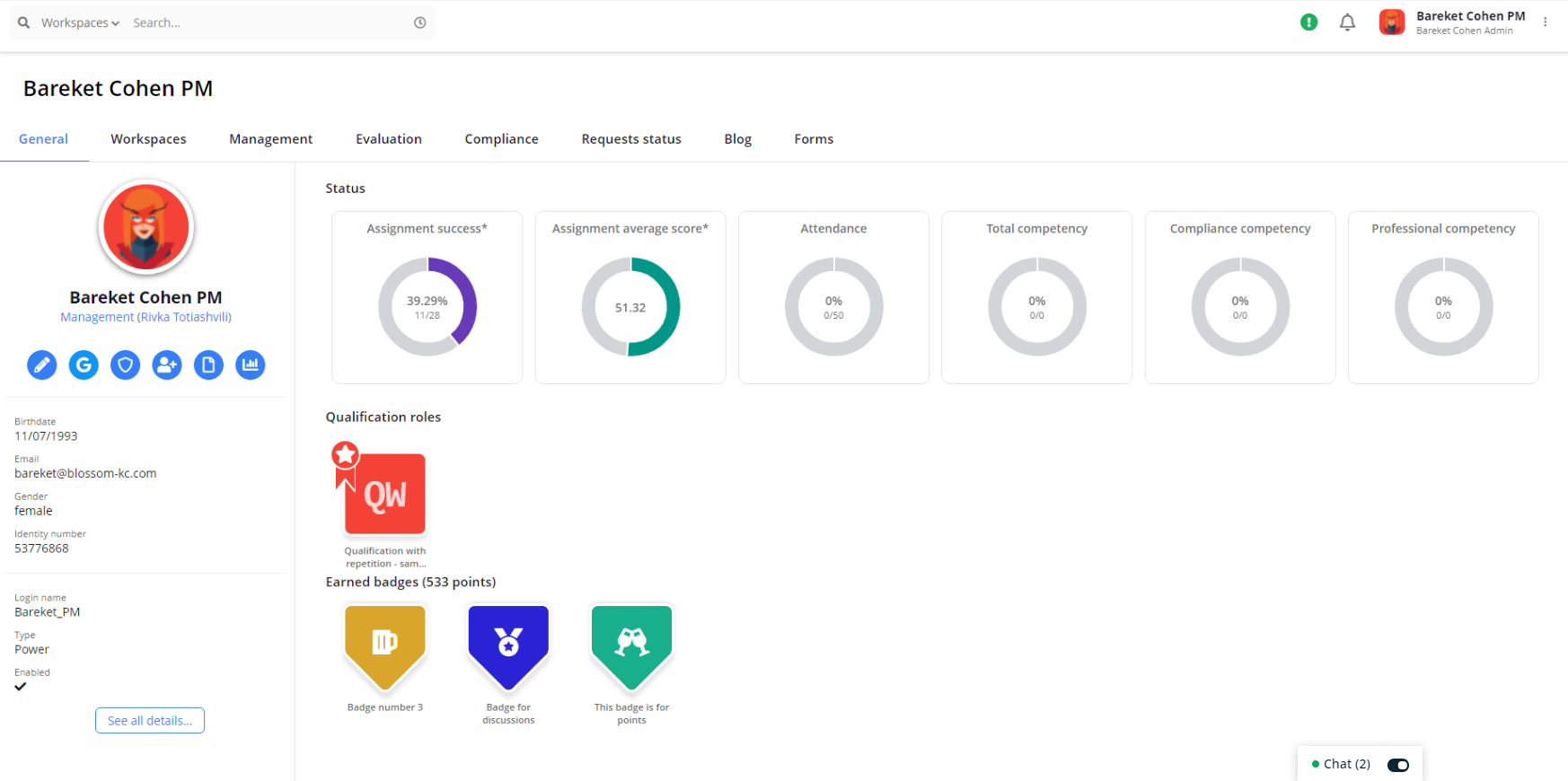
Finally, both learning models provide data and insights to enable you to measure the effectiveness of L&D initiatives.
With blended learning, organizations can access real-time, valuable analytics on learner progress, engagement, and performance. These insights offer a window into your employees’ skill development, helping you make informed decisions about training investments, resource allocation, and continuous improvement initiatives.
Although hybrid learning also gives businesses data and analytics, the equal balance of ILT and online sessions makes compiling robust data more time-consuming. For example, ILT sessions might lack the systems for learners to provide continuous feedback– increasing administrative burden and limiting vital feedback.
Next steps? Ask yourself:
- What are my learning goals?
- What are the desired results for the whole program or lesson/module?
- What do I want to achieve, such as giving instruction, information, or support?
- What are the needs of employees? Consider role and job demands, available technology, and experience.
- What is my budget, how much time do I have, and what additional resources are available, for example, admin support?
Spend time reflecting on each of these questions. The answers will help you choose the best learning approach for your organization and employees–achieving optimal results.
Choose the right learning model for your organization with Blossom
To summarize, both learning models have benefits. Choosing the right learning approach can allow employees to acquire new skills and knowledge. This improves their current job performance and enhances their potential for career advancement within your organization.
The choice should align with your learning goals, the nature of the content being taught, the preferences of the learners, and the resources available.
Make the right decision for your workforce. Get it right and have a profound and long-lasting impact on individual growth and overall organizational success.
Ready to learn more? Start building a better learning environment with Blossom. Schedule a demo today.
